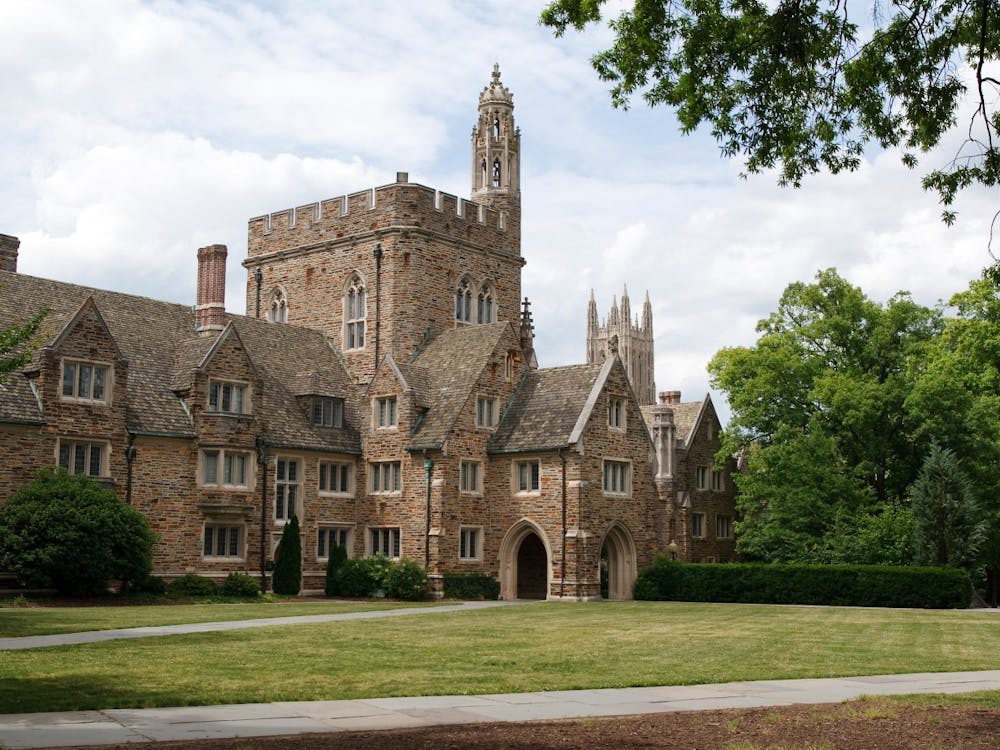Duke’s new residential housing system will link east campus dorms to west campus quads starting in Class 2025.
The new residential model, called QuadEx, will focus on residential quads with their “own identity, traditions and social events”, like other private universities. The “initial implementation of certain elements” is underway this semester, and the system will be fully operational in the fall of 2022.
The first years will continue to live in the east, and from the 2025 class, one or two houses on the east campus will be assigned to one of the seven quads on the west campus. Students cannot choose their quads. This is similar to the automated linking system that was put in place in spring 2020, but linking is now mandatory. The University will announce more details on the bond this semester, according to the QuadEx FAQ.
The current early years will learn their assigned quadruple in Spring 2022, and the Class of 2026 and subsequent classes will learn their East Campus and West Campus residences before moving in.
Students will still be able to rush to Greek selective living groups and organizations, but selective housing will be phased out after the 2022-2023 academic year.
Mary Pat McMahon, vice president and vice president of student affairs, told The Chronicle that vibrant learning communities “will be built into housing” when asked how they would be affected by QuadEx.
Likewise, Christina Wang, president of Duke’s student government, wrote that QuadEx “plans to preserve and nurture the experience of LLCs, FOCUS groups, and academic groups.”
“The quads will provide a sense of belonging, friendship and continuity in the transition from the east campus to the west campus, throughout their stay at Duke and well after graduation,” the website says.
Students are allowed to select their roommates and request to block with friends, but all members of a block must be in the same Quad.
Students will live in their assigned quad in second year, but will still “retain affiliation with their quads” if they choose to live elsewhere after their second year. About 125 beds will be reserved for upper class students in each quad.
Juniors can live in their quad or other upper class accommodation on West, including Hollows Quad and 300 Swift. Seniors can live in one of these locations or off campus.
Wang wrote that the reason Hollows is not part of the quad system is “the result of its different housing style (suite style living)”.
Get The Chronicle delivered straight to your inbox
Subscribe to our weekly newsletter organized by an editorial. Cancel anytime.
“Additionally, the goal of the Quad program is to create community in shared spaces such as Gothics and more tightly grouped Quads, making Hollows less ideal as a community building space for sophomores / juniors,” Wang added.
Beginning in fall 2022, the early years will participate in a quad house course called “Duke-Durham 101”, which aims to prepare students for “good citizenship” at the university and in the surrounding community. Second year students will participate in ‘Sophomore Spark’, which will offer academic and professional programs and networking opportunities for alumni. Quads will also be assigned affiliate faculty members, who will provide mentorship and support quad traditions without the residential component.
Planning for QuadEx began in 2018 with the launch of the Next Generation Living and Learning Experience working group, according to its FAQ page. The recommendations made by the second iteration of the committee shaped the current model, which will be rolled out at a later date as the University develops some of the logistics.
McMahon told The Chronicle on Tuesday that Duke was still working on logistics for QuadEx. She estimates that they will officially roll out the full plan in the last week of September.
Why the change?
Senior Ysanne Spence, president of Duke University Union, wrote that Duke has been a “virtual explosion of selectivity, barrier and impostor syndrome” in her experience. For Spence, QuadEx is an opportunity to “remove guesswork” from the social scene at Duke.
“In addition to the fact that students have just been accepted into an institution with an acceptance rate of 4%, students are then pushed towards applications and monitoring social and professional events and developments,” he said. she writes.
Wang agreed, citing a “need for more inclusive spaces and community development opportunities for all students, especially those who choose not to join selective social organizations (and even for those who choose to join social organizations). selective) “.
Wang wrote that “the intentions of administrators are not to restrict the student experience, but rather to expand it.”
“I think a misconception that a lot of students have is that administrators are trying to limit student freedoms and create restrictions around what students can and can’t do socially, but a big goal behind that. program is really to foster inclusion and community at all levels and to create a less segmented Duke student experience, ”she wrote.
Student comments
Wang and Spence both noted that Duke incorporated student feedback into the QuadEx design process. Wang wrote that there were numerous student focus groups “designed and selected to incorporate the many diverse facets of student spaces and experiences” who were invited to share their views on social, academic and residential life. to Duke.
Spence wrote that there will be more opportunities for students to voice their opinions on quads and the implementation of QuadEx, including freebies.
Leah Boyd contributed reporting.
| Editor-in-chief
Nadia Bey is a Trinity junior and editor of The Chronicle 117th volume.


Leave a Reply